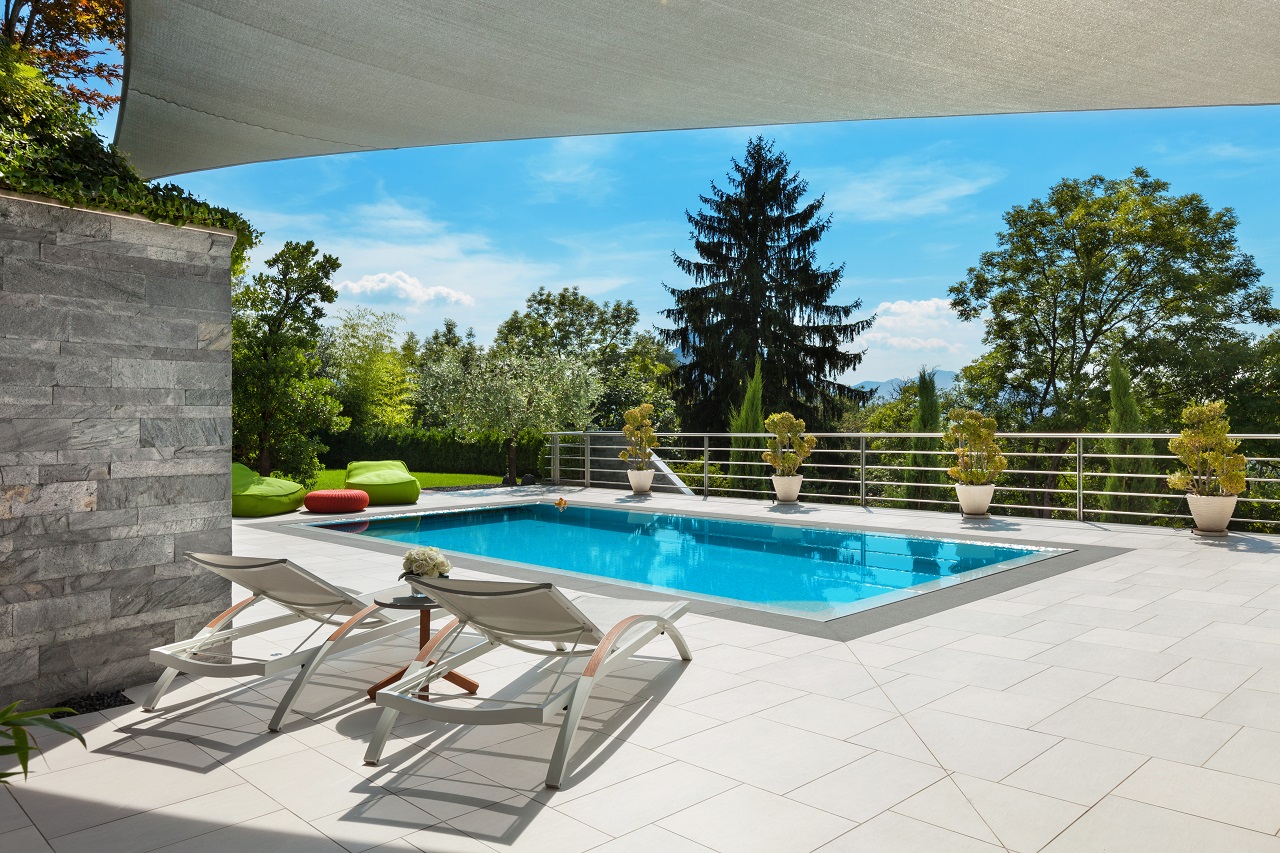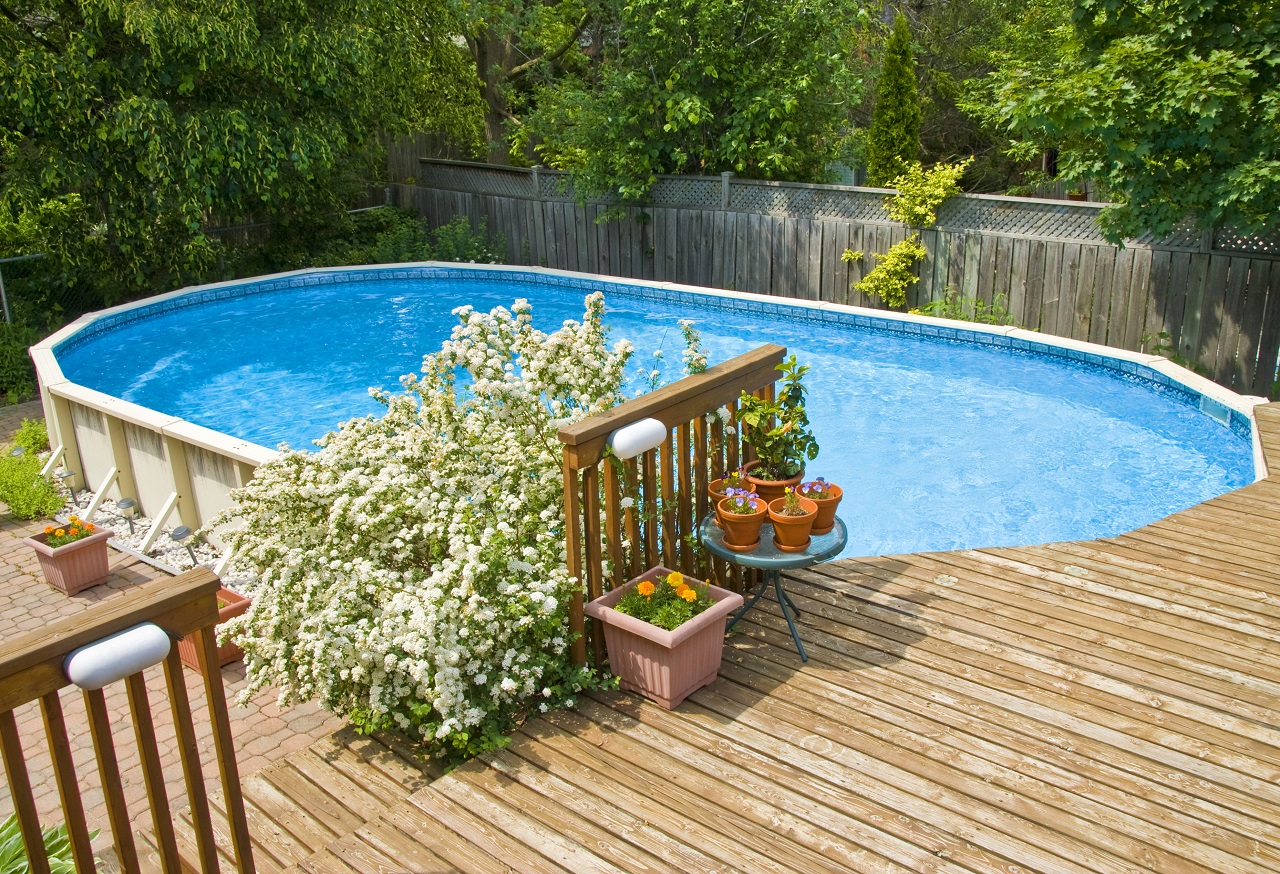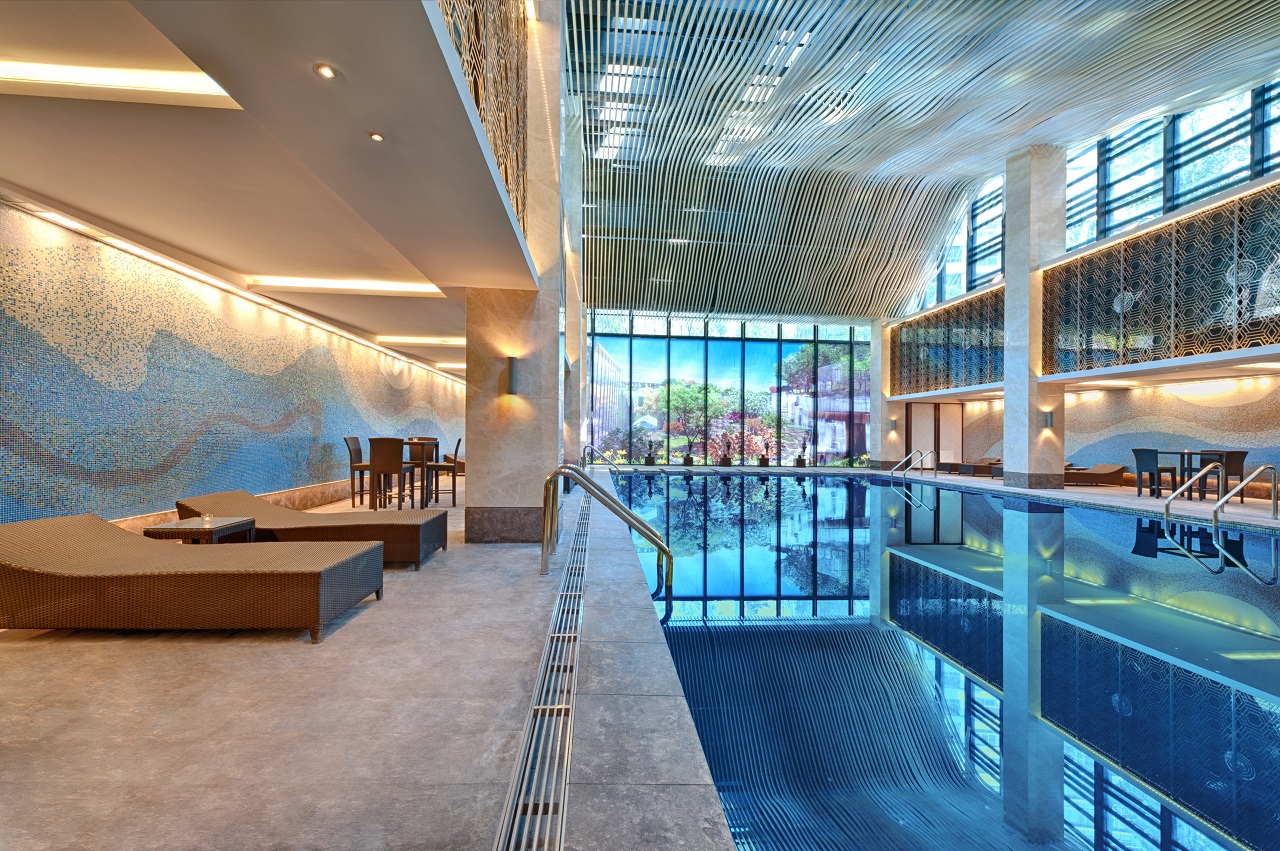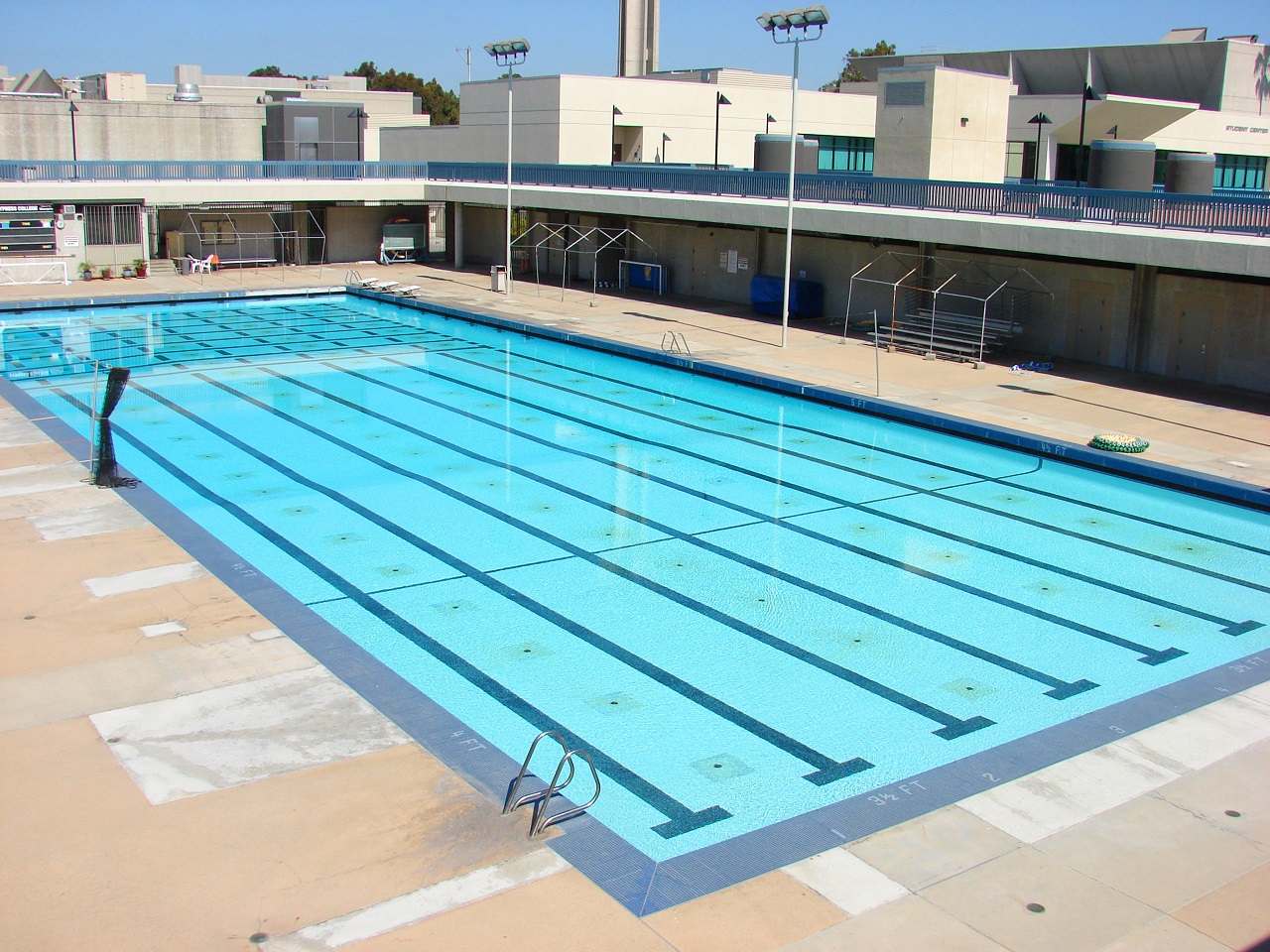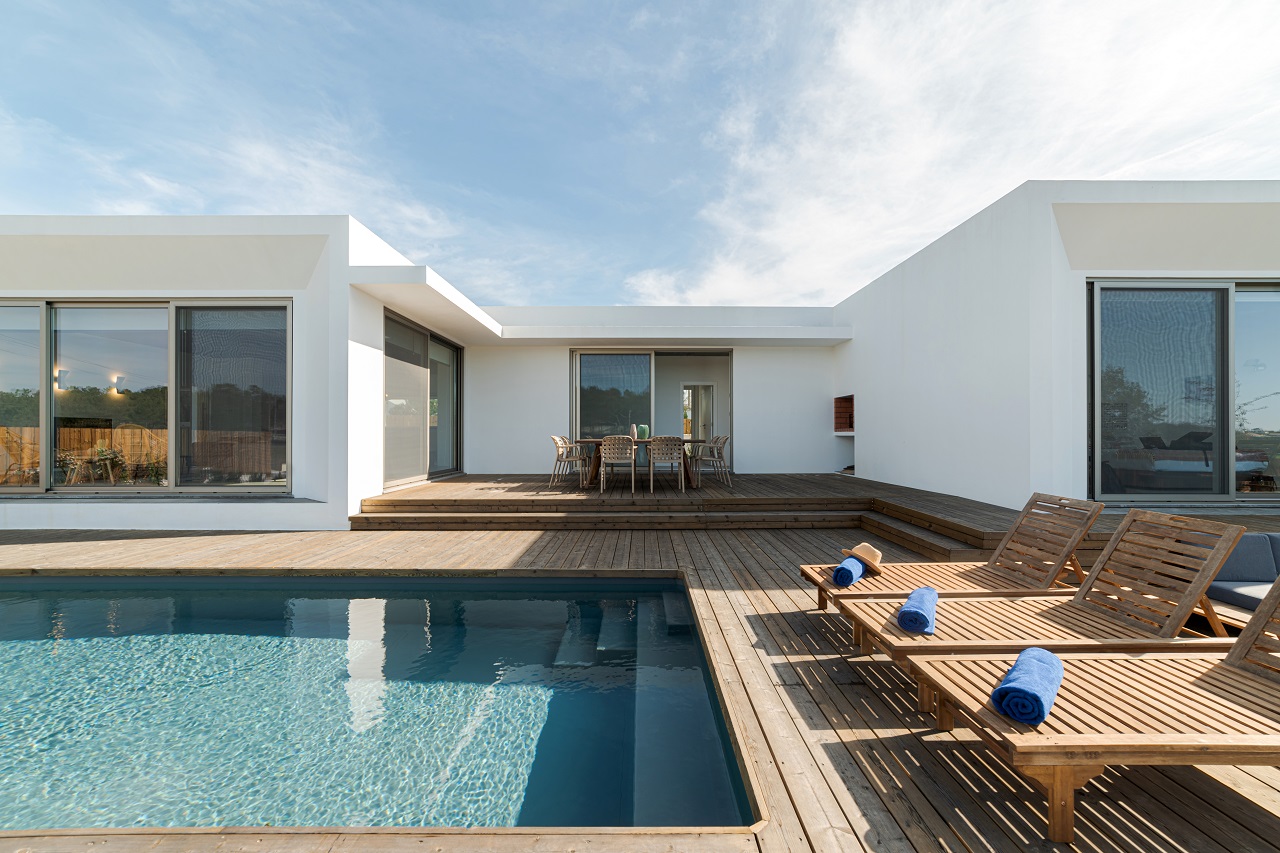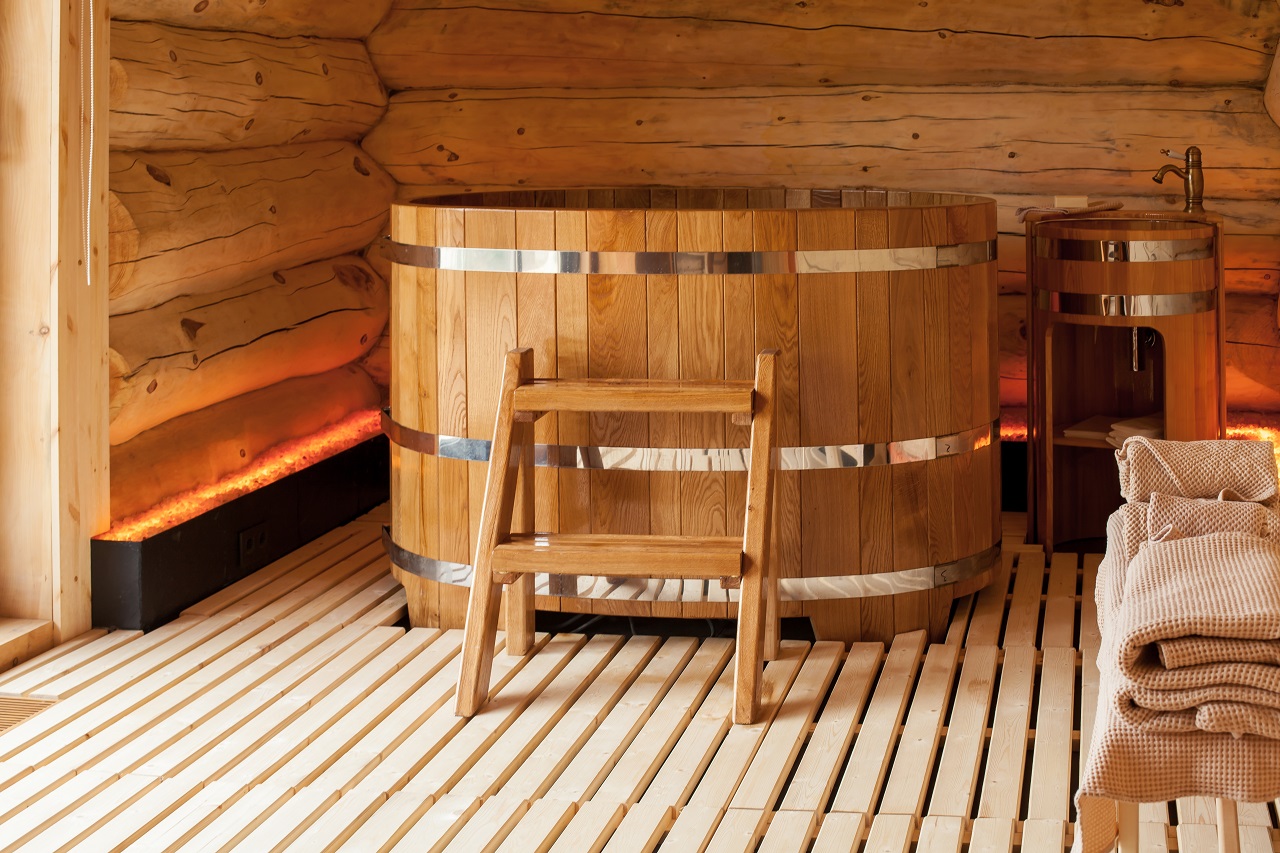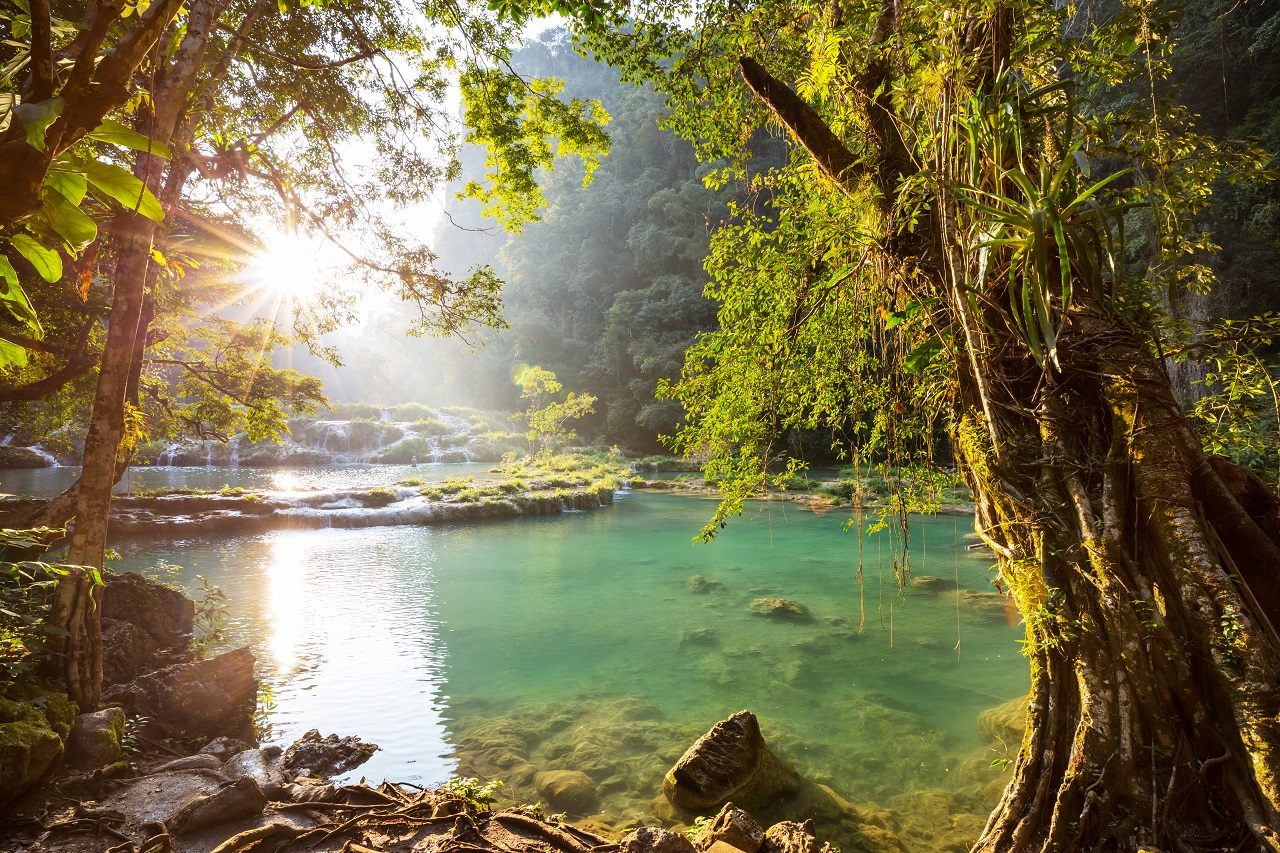Adding a swimming pool to your home gives you more than just luxury. The right pool can add value to your home, too.
Before you whip out the credit card, you need to give due consideration to your intended use with so many different types of pool up for grabs. By taking the time to do plenty of thinking and research, you’ll minimize your chances of getting the wrong pool for your needs.
We’ll get right down to business now with a comprehensive look at 15 different types of pool so there’s something for all tastes and budgets.
Dive in!
I. 15 Different Types of Swimming Pool
- In-Ground Swimming Pools
- Above-Ground Pools
- Indoor Pools
- Lap Pools
- Olympic Sized Pools
- Swim Spas
- Infinity Pools
- Architectural Pools
- Hot Tubs and Spas
- Spools
- Plunge Pools
- Recreational Pools
- Natural Pools
- Saltwater Pools
- Kiddies Pools
1) In-Ground Swimming Pools
An in-ground swimming pool is a permanent structure built into the landscape of your home. As such, this type of pool is unsuitable for renters.
You’ll find in-ground pools made of different materials, with the most common as follows:
- Fiberglass: Fiberglass in-ground pools are typically pre-fabricated and delivered in one piece. The flexibility of fiberglass pools makes them a great choice for earthquake-prone regions. Fiberglass panel pools can be constructed on site rather than pre-fabricated, offering more flexibility with design
- Concrete: A concrete in-ground pool is poured on site so you can design these pools in almost any shape and size. These pools can be finished with a variety of treatments, and they come in all colors of the rainbow
- Vinyl liner: A vinyl-lined in-ground pool has panel walls fastened together and sitting on a concrete base. A bespoke vinyl liner then covers the whole swimming pool
The average in-ground pool costs perhaps $35,000 and you’ll also need to factor in the logistics of permits and zoning. This is not your easiest option if you want a home swimming pool, but it’s certainly one of the most rewarding once installed.
2) Above-Ground Pools
An above-ground pool is the most popular and the most affordable type of swimming pool.
These pools simply sit on the surface of your yard, and sometimes come with surrounding deck or patio.
Above-ground pools come in a variety of materials, including:
- Aluminum
- Resin
- Steel with vinyl liners
This type of pool can be assembled and dismantled with ease, making it a great project if you’re not too DIY-inclined, and also ideal if you are renting your home.
An above-ground pool is a wise bet if you have a yard with restricted access. Arriving in small pieces, you’ll have no access issues.
You should also consider the drawbacks of above-ground pools before steaming in. You’ll be limited to a small selection of designs in pursuit of a bargain.
Also, these pools are difficult to blend into your garden landscape, even if you try introducing deck or patio as a surrounding feature.
The other serious downside of above-ground pools is lifespan. You’ll need to replace vinyl liners every three to five years, and you won’t get the same overall lifespan as an in-ground pool, but you’ll only need to pay a fraction of the cost.
3) Indoor Pools
Indoor swimming pools are covered and insulated by at least three walls.
Located indoors under a roof, these pools usually come in geometric shapes designed primarily for year-round swimming and training.
You often find indoor pools in regions where the climate is unfavorable to swimming year-round.
Heating the water of an indoor pool costs much less than doing so for your outdoor pool. The insulation of the pool room allows much less heat to escape.
4) Lap Pools
Lap pools are specific variants of in-ground pool designed with fitness uppermost in mind.
Long and rectangular, these pools are intended to streamline swimming lengths, offering a minimum of 40 feet of unobstructed space so you can swim without turning too often.
You can expect to encounter similar construction costs as when building a standard in-ground pool, so this is not an option for any bargain hunters out there.
5) Olympic Sized Pools
Whether you’re a competitive athlete in training for events, or you just want to increase the wow factor of your home, an Olympic sized pool is 164 feet long (that’s 50 meters).
6) Swim Spas
A swim spas is another variety of home swimming pool that makes a great addition to your fitness arsenal. Over the past year, we have all been spending more time at home, and many have seen the advantages of saving on that gym membership and training at home.
Swim spas are a combination of a pool and spa, featuring powerful jets that allow you to swim against a constant flow.
Measuring as little as 12 feet across, swim spas work well in small yards. You won’t be moving through the water, but rather swimming against it, so you can get away with much smaller overall dimensions than a regular lap pool demand.
Heating swim spas gives you the option of a relaxing spa when your workout is done.
7) Infinity Pools
Infinity pools go by many names, including:
- Zero edge pools
- Negative edge pools
- Vanishing edge pools
- Disappearing edge pools
- Infinity edge pools
This pricey type of pool is always custom-made. The object of most infinity pools is to highlight a specific view.
If you get this type of swimming pool right, you’ll be gifted with the illusion of water cascading over the very edges of your property, even though you won’t see or hear it falling.
As you would expect, this is one of the most expensive types of swimming pool.
8) Architectural Pools
An architectural pool is deliberate, structured, and often compliments the lines and form of the main house, sometimes even being made from the same materials for a seamless aesthetic straight off the pages of a glossy magazine.
Usually designed by an architect, these sophisticated pools are often built from the ground up at the same time as the house itself.
9) Hot Tubs and Spas
A hot tub or spa is a small heated pool that’s solely intended for relaxation or hydrotherapy.
Portable, above-ground models are usually called hot tubs, while in-ground models are usually called spas. This type is often built in tandem with an in-ground pool.
The small size of these pools means they are much less expensive to install and maintain than in-ground pools. That said, the space-saving dimensions means use is limited.
10) Spools
A spa crossed with a pool gives you a spool.
With more and more people downsizing, there is a growing need for compact pools that give you the benefits without needing as much real estate in your back yard.
Thee small pools work especially well for relaxing with friend and family rather than for serious swimming.
11) Plunge Pools
A plunge pool is a very small cold water pool.
These pools have been used for thousands of years in eastern medicine, and they were also used in ancient Roman times.
Many athletes use plunge pools following a sauna, heated workout, or spa session for its perceived therapeutic benefits.
You can install a freestanding plunge pool, or you can attach it to a more substantial in-ground pool.
While plunge pools might look like a spa at a glance, you’ll only need to dip your toe in the water to feel the difference!
12) Recreational Pools
A recreational pool is something you find on the estates of the rich and famous, more like a mini water park than a traditional swimming pool.
Having said that, it’s perfectly possible to create your own version of one of these aqua wonderlands, as long as you have a generous budget, of course.
Features of recreational pools include:
- Tunnels
- Boulders
- Caves
- Slides
- Swings
- Water features
While this kind of pool works wonderfully for kids, it’s also great for fun lovers of all ages.
If you want the advantages of a water park without the drawbacks of all those people or the journey to get there, consider adding a recreational pool to your larger home.
13) Natural Pools
The concept of natural swimming pools dates back to the 1980s, where they started cropping up in Europe. Here, they are known as swimming ponds.
A natural pool is self-cleaning, so you won’t have all the hassle and expense that comes with maintaining the pool water chemistry. They combine swimming gardens with a pool area for a magnificent effect in the right outdoor space.
Most of these pools are lined with either rubber or polyethylene. Inside the pool, there is normally a dedicated regeneration area, where aquatic landscaping serves as a natural and organic cleaning system in place of the chemicals required for most residential swimming pools. Water is circulated through this regeneration zone with pumps and skimmers. The water is then drawn over tiles, gravel, or rocks. Friendly bacteria essential for pool health attaches itself to the wall and serves as an extra biological filter.
Where an artificial pond is usually murky, packed with soil sediment and groundwater runoff, you’ll be able to see clearly through the water in a natural pool.
You can expect a natural pool to cost about the same as a conventional pool. You may end up needing to pay slightly more, depending on the extent of the landscaping required.
Not only can you sidestep swimming in chlorinated water, but you’ll also have the opportunity to encourage some fascinating plant life in these things.
14) Saltwater Pools
Saltwater pools first gained prominence in New Zealand and Australia, and they have been gradually working their way across the rest of the world.
Rather than a type of pool in the strictest sense, a saltwater pool makes use of a generator or a saltwater chlorinator you have built right into your pool. This is taken care of either during the construction process or after the event. You could consider adding a chlorinator to a regular above-ground pool, as long as it is designed for that purpose.
Kiss goodbye to swimming in chlorinated water, and swim or relax in salt water instead.
15) Kiddies Pools
The cheapest of all swimming pools, inflatable and disposable kiddies pools are easy to find and easy to use.
The best time to shop for one of these pools is right at the end of the swimming season. You’ll often find them discounted at up to 75% by this stage of the year, with stores looking to clear their shelves. Even if you don’t need one right now, you could pop it in storage and surprise the kids next summer.
You should always empty these pools after each use. Not only will this preserve the lifespan of your pool, but it will also water your lawn without you needing to reach for the garden hose.
It goes unsaid that you should always supervise kids when they are playing in the pool, too. Add a pool gate, too, when the pool is not in use.
II. Conclusion
We very much hope you now have a clear understanding of the wide array of swimming pool solutions you could take advantage of for next swimming season.
You don’t need to go to the lengths of installing an expensive in-ground pool with a luxurious pool house to start enjoying your time outdoors. Try any of the more affordable options on our list, from a swim spa or a hot tub through to a cheap above-ground pool.
We would recommend you bookmark our blog before you head off. We have a very busy content calendar as we push into fall, and we update our content daily at Wild River Country. Pop back very soon and don’t miss out!
